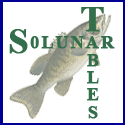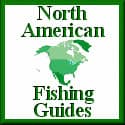Bass on Hook is Supported by our readers. As an Amazon Associate We earn commissions from qualifying purchases. For more informtion read our Amazon Affiliate Disclosure and Affiliate Disclosure Policies.
Aquatic Vegetation Friend and Foe
By Tom Lester Ⅱ
As Lake Richland-Chambers continues to age, the dynamics of the lake change quite rapidly.
A great deal of the large timber in the lake has fallen, opening the lake up for all to see it's enormous size as Texas' 3rd largest inland lake.
Additionally as is common on most fairly new reservoirs, R-C has seen tremendous increases in the volume of aquatic vegetation or what some refer to as "moss".
For the most part hydrilla, pondweed and star grass are native to Texas waters.
Once an impoundment "settles" so to speak, these grass begin to appear in areas conducive to their growth.
Unfortunately however, some of these areas that promote the growth of these and other vegetations are the same areas people elect to build homes, boat docks and other structures commonly found near our lakes.
The grasses can then become a huge problem for the owners of these lake fixtures.
Texas Parks and Wildlife Department (TPWD) has statistical data showing that lakes with an adequate amount of aquatic vegetation lend themselves to becoming popular fishing lakes, especially for bass fishing.
Aquatic Vegetation Plays An Important Role In Producing Bass
This vegetation plays a vital role in the recruitment of our fish species.
In other words, once fish eggs hatch in the presence of these grasses the baby fish have a better chance of survival because they have a place to hide, thus increasing their recruitment rate.
By the same token eggs that are hatched in areas without grass tend to be at a greater risk of predation resulting in a lower recruitment rate which means lower numbers of fish.
Richland-Chambers experienced this condition just a few short years ago according to TPWD biologist Richard Ott.
Along with electro-shock surveys of fish populations on the lake each year, TPWD also surveys the amount of vegetation in a given body of water and scores it.
Over the past few years R-C has seen an increase of aquatic vegetation of over 400%.
For anglers this has resulted in a good increase in numbers of catchable fish in the lake.
On the other hand it has meant increased problems for landowners around the lake.
Aquatic Vegetation Is A Big Concern For Land Owners
The big question here is: How can both parties be happy about the presence of aquatic vegetation in our lake?
Of course if I knew the answer to that I could probably become very wealthy.
Bottom line, I don't think there is a good answer available.
To eradicate all vegetation in a lake would be disastrous in many ways.
Since the grasses found in our lakes serve as a natural filtration system for the body of water in question.
The removal of all grass in a lake could result in poor water conditions.
Other governing bodies of lakes have tried this approach only to discover that when the sprayed or used grass eating fish to remove all of the grass in the lake, the fishing quickly turned south.
Since there were few places for small fish to hide they got eaten up by the larger fish.
Summing Up Aquatic Vegetation Friend And Foe
Remember what you learned in science regarding the dinosaurs?
Once the food supply was gone and they ate all of their young they died and so did their existence.
The same happened on the lakes that removed all of the grasses.
The negative economic impact of a large lake like Richland-Chambers loosing its fishing and fishing related income is staggering.
Just ask the folks that owned businesses such as gas stations, motels, restaurants, etc. around Lake Conroe several years ago, just to cite one example.
Homeowners and property owners around the lake have tried with limited success to control the grass problems around their properties.
Unfortunately for them with the exception of total eradication (which would still only last a few years) there is no simple answer available.
TPWD and other governmental agencies can assist property owners by pointing out ways to manage the grass problem around their property.
By keeping sight of the fact that there is not a good total solution for either side of this issue we can all work together to exist in harmony with the situation.
Until next time, enjoy the great outdoors.
Tom Lester
Look for other articles written by Tom Lester in Tom's Pro Staff Angler Profile










